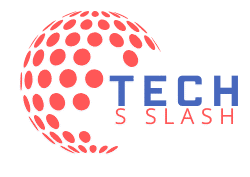What’s the Deal with Backlight Unit Lens Technology Patents? Let’s Break It Down
If you’ve ever held a smartphone, watched a flat-screen TV, or stared at your laptop for way too long (guilty!), you’ve experienced the magic of backlight technology—whether you realized it or not. But there’s more going on behind those screens than meets the eye. And lately, something that’s been popping up more and more in tech circles is the idea of backlight unit (BLU) lens technology patents.
Sounds a bit technical, right? Don’t worry. We’re going to talk about it in plain English. No engineering degree is needed—just a little curiosity.
First Things First: What Is a Backlight Unit?
Alright, so let’s start simple. A backlight unit (often just called BLU) is a critical part of any LCD (liquid crystal display) screen. Unlike OLEDs, which light up pixel by pixel, LCDs don’t emit light by themselves. They need a light source behind them so the display is visible. That’s the job of the BLU.
Basically, without a BLU, your screen would be as dark as your coffee before sunrise.
Enter the Lens: The Unsung Hero of Brightness
Now here’s where things get interesting. Inside the BLU, there are usually multiple layers: LED lights, light guide plates, diffuser sheets, reflectors—you get the idea. And one of the key innovations is the lens that helps shape and direct light where it needs to go.
The lens helps make screens brighter, more energy efficient, and even thinner. Think of it like using a magnifying glass to focus sunlight—except here, it’s focusing artificial light evenly across your screen.
So Why All the Fuss About Patents?
In the tech world, innovation equals competition, and competition often leads to a gold rush of patent filings. Companies that design these back-light unit lenses—think big names like Samsung, LG, and BOE—spend millions on R&D (research and development). When they finally crack a new design that makes a display brighter, more efficient, or just cooler-looking, they rush to patent it.
Why? Well, imagine spending years developing a new lens that boosts screen clarity by 20% while using less power. The last thing you want is another company copying it and slapping it on their next smartphone. A patent gives you legal ownership over that invention.
What’s Being Patented?
When it comes to BLU lens technology, companies are patenting all kinds of things:
- Micro-lens structures that bend and scatter light in specific ways
- Materials used for the lens that improve durability or clarity
- Lens placement within the backlight assembly
- Light angle optimization to reduce energy waste
And yes—it gets super specific. Like, “an optical lens structure with a convex radius of 0.5mm that aligns with a light-emitting diode at a 45-degree angle”… kind of specific.
These aren’t just ideas—they’re blueprints for how future devices might work better and look sleeker.
How Do These Patents Affect Us?
Let’s say you’re not in the tech industry. You’re just someone who wants a better phone or TV. Why should you care?
Well, here’s the thing: patents drive progress. When companies compete to build better BLU lens tech, we all benefit. Our devices get:
- Brighter screens without extra power drain
- Thinner and lighter designs
- Longer battery life (yes, please!)
- Improved visibility in sunlight—hello, outdoor Instagram scrolls
But it’s also a bit of a double-edged sword. Sometimes, patients can slow things down. If one company owns a crucial design and refuses to license it, others might have to go back to the drawing board—or risk a lawsuit.
So, What’s Next?
Tech companies are continuing to push the envelope when it comes to back-light unit lens innovation. Some are working on smart lenses that adapt to ambient lighting conditions. Others are finding ways to combine BLU lens tech with AI to create dynamic displays that adjust in real-time.
It’s wild stuff. And every little improvement usually comes with a fresh patent attached.
Wrapping It Up
So yeah, “backlight unit lens technology patent” might sound like something pulled from a science fair or a legal document, but it touches your life every single day. Whether you’re binge-watching your favorite show, working on your laptop, or just checking your phone at the bus stop, there’s a whole world of tech under that screen, protected by tiny but powerful pieces of intellectual property.
Visit the homepage for the latest updates.

